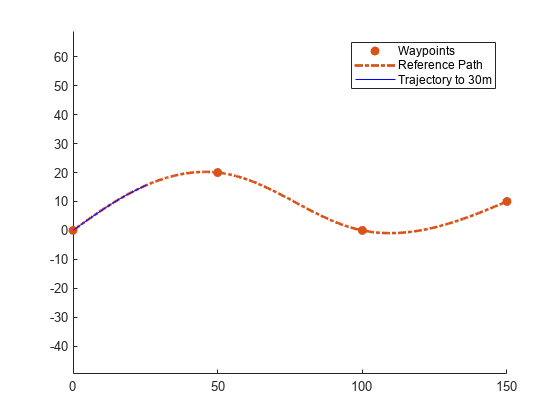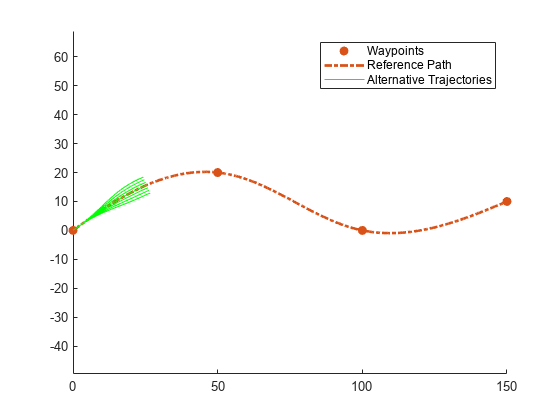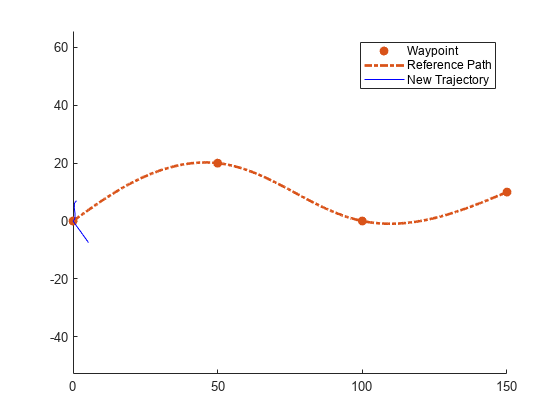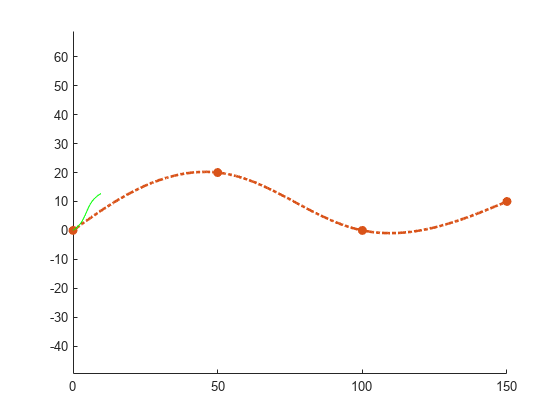trajectoryGeneratorFrenet
Find optimal trajectory along reference path
Description
The trajectoryGeneratorFrenet object generates alternate
trajectories using fourth or fifth-order polynomials relative to a given reference path. Each
trajectory defines a motion between Frenet states over a specified time span.
Frenet states describe their position, velocity and acceleration relative to a static
reference path, specified as a referencePathFrenet
object.
The object expresses Frenet states as a vector of form [S dS ddS L dL
ddL], where S is the arc length and L is the
perpendicular deviation from the direction of the reference path. Derivatives of
S are relative to time. Derivatives of L are relative
to the arc length, S.
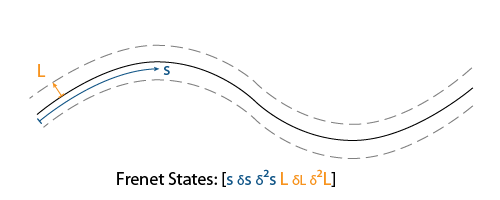
To generate alternative trajectories, specify the initial and terminal Frenet states with
a given time span to the connect object
function.
Creation
Syntax
Description
connectorFrenet = trajectoryGeneratorFrenet(
generates trajectories between initial and terminal states relative to a reference path
refPath)refPath specified as a referencePathFrenet object. The refPath input argument
sets the ReferencePath
property.
connectorFrenet = trajectoryGeneratorFrenet(
specifies the time interval for discretization. The refPath,'TimeResolution',timeValue)timeValue
argument sets the TimeResolution
property.
Properties
Object Functions
connect | Connect initial and terminal Frenet states |
createParallelState | Create states using Frenet and global parameters |
Examples
References
[1] Werling, Moritz, Julius Ziegler, Sören Kammel, and Sebastian Thrun. "Optimal Trajectory Generation for Dynamic Street Scenarios in a Frenet Frame." 2010 IEEE International Conference on Robotics and Automation. 2010, pp. 987–993.
Extended Capabilities
Version History
Introduced in R2020b
